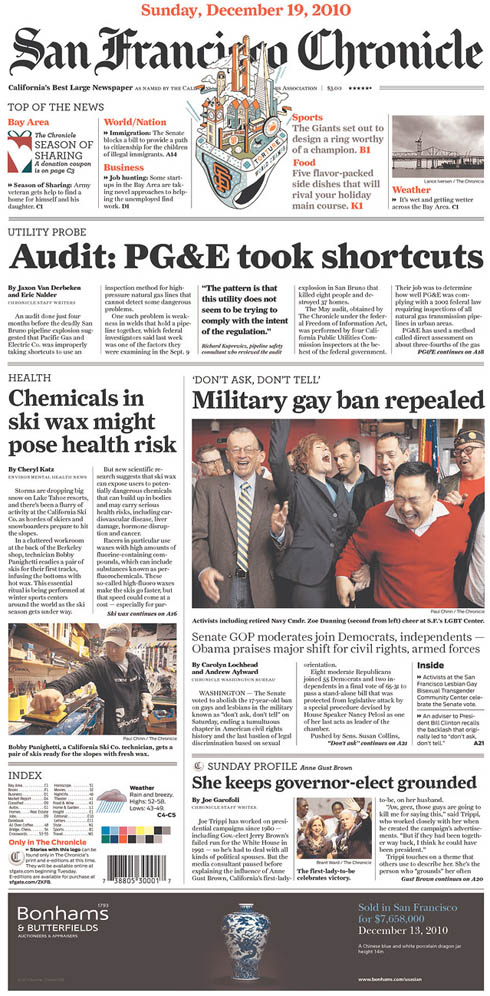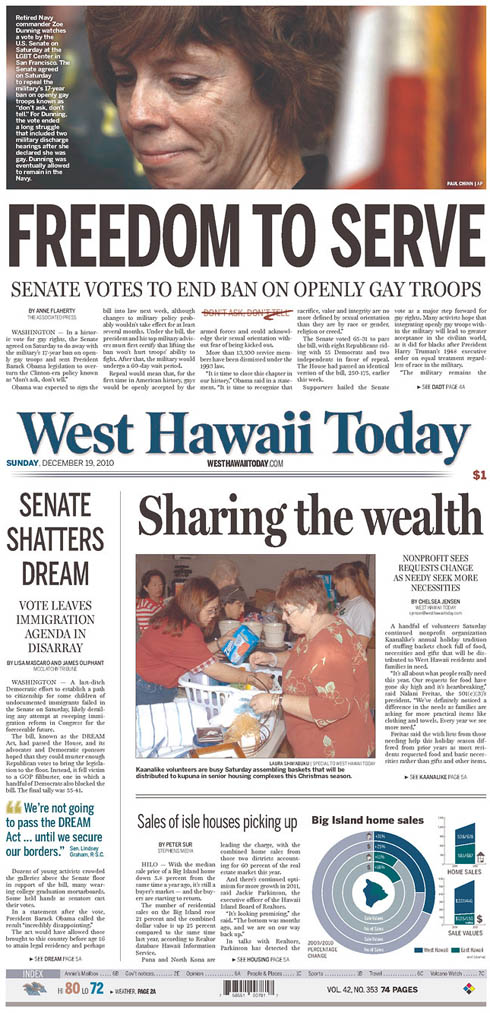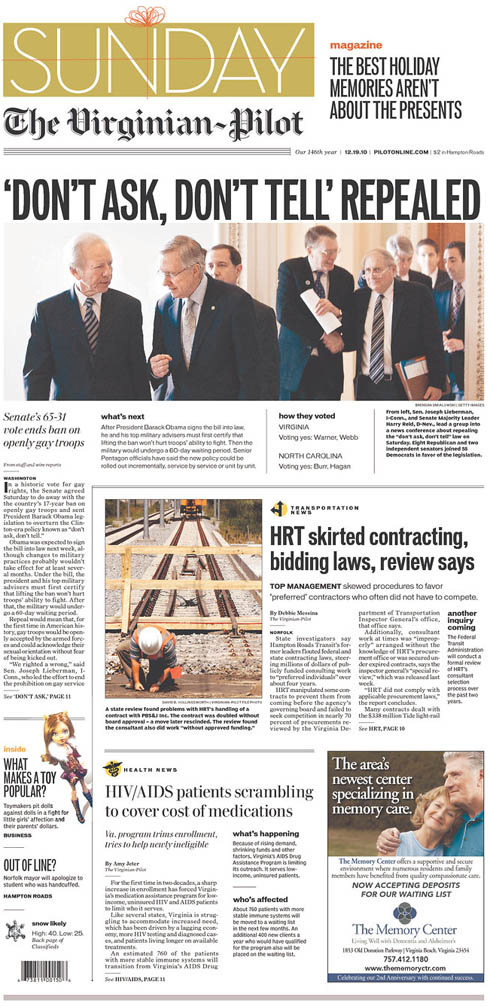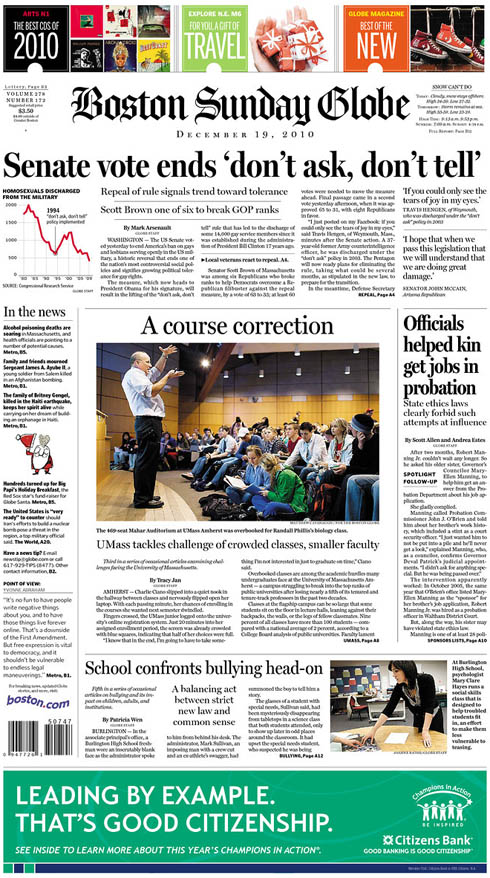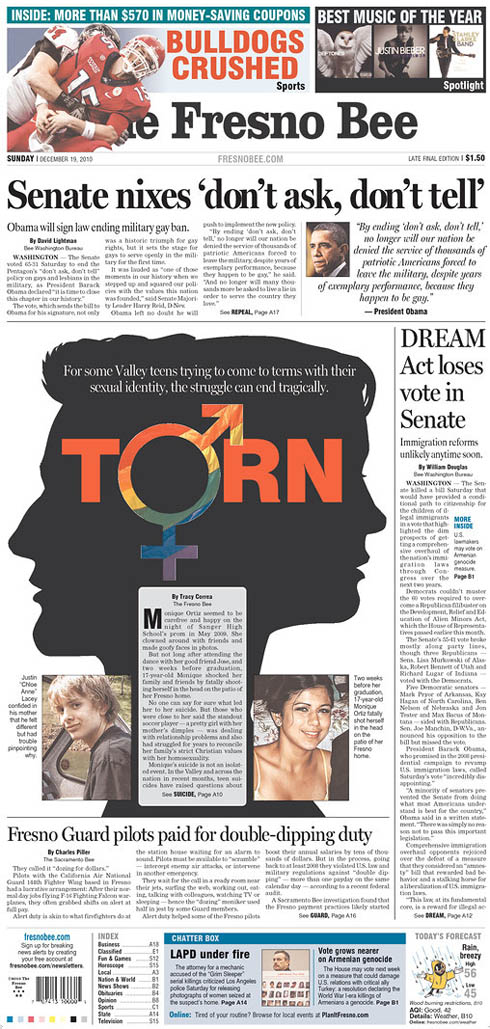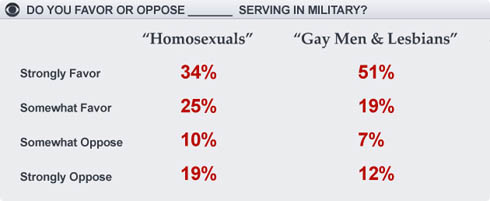I looked through Newseum today to see how papers covered yesterday’s repeal of “don’t ask, don’t tell.” This is not an exhaustive showing, but a handful of examples.
San Francisco Chronicle photographer Paul Chinn’s photos from the San Francisco Lesbian Gay Bisexual and Transgender Center were featured on at least two fronts today.
First, he was on, as you’d expect, the Chronicle’s front page:
That woman second from left is Zoe Dunning, a retired Navy commander and a lesbian.
From Marisa Lagos’ story:
[Dunning] came out in 1993 and was one of the first people to be challenged under the policy implemented by then-President Bill Clinton.
Dunning won, but her defense strategy was later deemed unacceptable by military leaders, meaning she remained in the service but others were unable to use the same defense. Until her retirement three years ago, she was thought to be the only openly gay person serving in the U.S. military.
“I’m living proof that the presence of a gay person doesn’t damage unit cohesion or morale,” she said. “I’ve seen 14,000 people discharged since then – 14,000 lives that were changed or altered or sometimes destroyed. … After 17 years of work on this, I am witnessing the end of this destructive policy. These are tears of joy.”
For more of Lagos story, go here.
—-
Another photo of Dunning, also by Chinn, was featured on today’s West Hawaii Today.
—-
That above-the-nameplate treatment made me thinking of The Virginian-Pilot, so I checked their front. Here’s how they handled the story:
—-
Closer to home, The Boston Globe’s page featured a chart showing the number of homosexuals discharged from the military:
To read Mark Arsenault’s coverage, go here.
—-
And finally, today’s Fresno Bee was interesting. The “don’t ask, don’t tell” story was stripped on top, above a centerpiece about gay teens coming to terms with their sexuality. Those of us in newspapers know that centerpieces are planned days, if not weeks, in advance, so this timing was coincidental, though fitting.
To read Tracy Correa’s story, go here.

